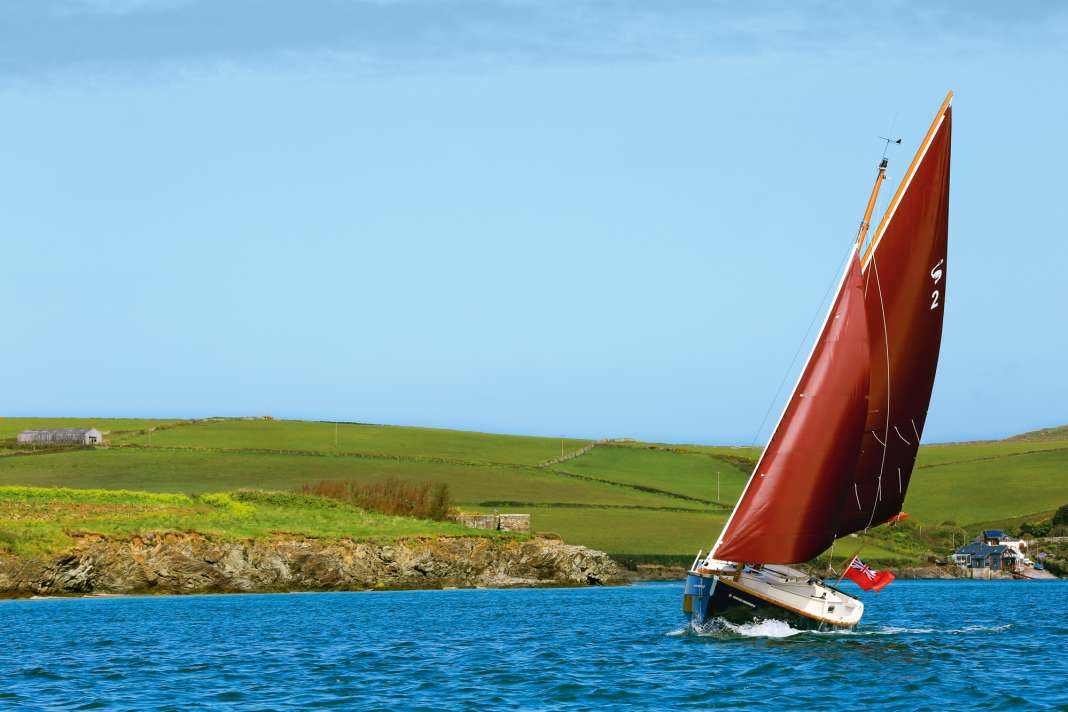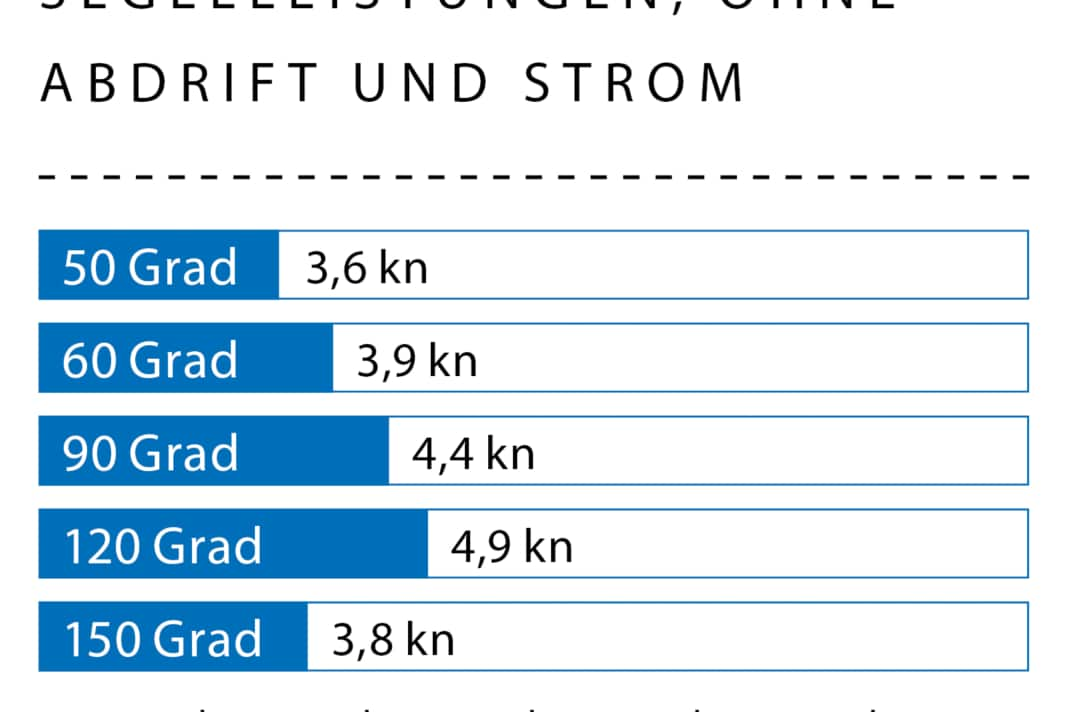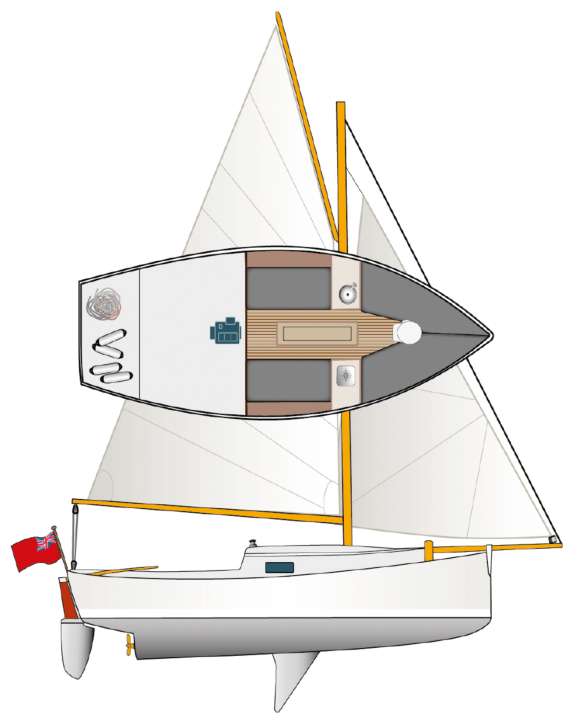





A night in a British bed & breakfast in Cornwall gives you a deep insight into the soul of Britain: single-glazed sash windows, anachronistically separated "cold" and "hot" water in the bathroom instead of a mixer tap, and for breakfast, the term "traditional" hides a menu that would give any fitness coach a hysterical fit: fried bacon, sausages, eggs, beans.
On the other hand, the island is a leader in many areas, such as banking or environmental policy. But the British car industry, for example, has been crushed between these poles: Mini? Belongs to BMW. Jaguar? Part of the Indian Tata Group. Rover? Discontinued. It was a similar story for many yacht shipyards.
The Cornish Shrimper 21 is a declaration of love to history
What does all this have to do with the Cornish Shrimper 21? A lot. Because the British dedication to tradition explains why a shipyard like Cornish Crabber is successful. They model their yacht types on traditional fishing boats.
And these were good-natured long keelers, workboats that fishermen used to haul in nets or traps in rough seas. Speed was not a central argument, it was more important that the man could manage the boat alone and, if necessary, get home safely in 8 Beaufort against the current.
The smallest member of the family was always the Shrimper series. Once started at 17 feet, it grew to 19 feet in the mid-1980s. The British sold over 1100 of these boats. The 21-footer rounds off the series at the top end. Shipyard boss Peter Thomas explains the idea behind it: "There is a very active shrimper class association here, and from time to time we heard a few requests from them about what they would like to see differently. And so, together with a group of owners, we drew up a list of what a new boat should be able to do better."
Optimised for falling dry
The test of the Shrimper 21 begins in style on a buoy that falls dry. Of course, it also has a 75-kilo ballast centreboard and two small GRP stub keel fins next to it, which allow the boat to stand upright on sand. Ideal for crews who also want to sail in shallow or tidal areas.
But the boat is still afloat, and the first surprise comes when stepping onto the near-back deck: even when an 89-kilo man boards the side deck, the boat barely heels. Weighing over 1.4 tonnes, a good 300 kilograms more than the current modern competition, does have its advantages. However, our test boat is equipped with a 9 hp built-in diesel engine from Yanmar. However, the boat would not be much lighter with an outboard engine, as the shipyard compensates for the reduced weight of the inboard engine with lead in the floor. The cockpit is very spacious and can be sailed by three or four people without any problems.
Time to familiarise yourself with the steep gaff rig. One advantage over the old shrimper is that the sail is no longer attached to the mast with a long line wrapped around it, but with Velcro straps, which are also coated with Teflon and slide easily over the golden-yellow spruce mast. The gaff glides up and the boat is ready to sail in no time at all. Buoy line off, genoa unfurled and off we go - albeit at a leisurely pace. With barely six to eight knots of wind, the Shrimper moves very slowly, the high weight and the relatively small sail area are noticeable.
Cruising instead of bludgeoning
Only when we sail a little further out of the Bay of Rock on the west coast of Cornwall and the wind picks up to eight to ten knots, sometimes even twelve knots in a few gusts, does the Shrimper come to life. Half-wind, the boat runs at around 4.6 knots, and even around 5 knots on the beam, but not much more than 3.5 knots upwind. You shouldn't expect speed and small turning angles here either. That would be like blaming a Land Rover for its mediocre motorway characteristics. However, as the target group tends to be older couples anyway, this doesn't really do any harm. A Shrimper is "cruised", not beaten. And it does so very pleasantly with smooth movements.
However, the tiller and jib sheet require a bit of tweaking. The attached, barely pre-balanced rudder develops pressure relatively quickly. Tacking is smooth, albeit noticeably slower than on modern boats. The wide, modern traveller for the mainsheet is undoubtedly useful, however, as pressure can be released as soon as the wind picks up.
The cut of the headsail or alternatively the position of the genoa did not seem quite ideal. The sail was difficult to hoist tightly. In addition, the jib sheet is difficult to release when seated due to the very high mounting point, so the crew member usually has to stand up.
In the gusts, the crew can then switch dinghy-like to the very comfortable edge, which is lined with teak moulding and on which the boat is pleasant to sail. However, the tiller jib is a little weak and slipped out of its lock several times due to the pressure of the rudder.
In the gusts, the Shrimper lays quite gently on the cheek, hectic manoeuvres are not necessary. The boat can certainly cope with a fair bit of wind, but you shouldn't overdo it, as it is not capsize-proof with the centreboard and internal ballast.
More quality of life below deck
The low water urges us to turn back. With the rustic chugging of the built-in diesel and the two-bladed fixed propeller, we return to the buoy in comfort. The engine is well insulated, hums quietly, and a few reverse approaches to the buoy show that the manoeuvring characteristics have actually become significantly better than before thanks to the shortened long keel.
Below deck, the tiny boat surprises with much more space than expected. Even the tester, who is not exactly small at 1.97 metres long, can lie comfortably in the forward berth, and the feeling of space is significantly better than on the Shrimper 19 thanks to the omitted mast support. You can even sit comfortably on the saloon berths with such body measurements. At around 1.90 metres in length, they can be used by many people. The interior has a pleasantly homely feel, with wooden panelling on the walls and a wood-panelled crockery cupboard giving the whole thing a nautical feel. The GRP finish right down to the last corner is very neat. The matt GRP bulkheads have been subsequently milled with a moulding that fits in well. New features include a sink with drain, which replaces the bailer of the old shrimper, and a two-burner gas hob. However, it is only centimetres away from the cushions and is no longer mobile like the previous spirit cooker.
It is difficult to categorise such a traditional ship in the market, especially as the price is heavily dependent on the pound sterling exchange rate. But as the English say: You get what you pay for.
The measured values for testing the Cornish Shrimper 21




The Cornish Shrimper 21 in detail

Technical data of the Cornish Shrimper 21
- Design: R. Dongray/D. Thomas
- CE design category: C
- Torso length: 6,40 m
- Width: 2,40 m
- Depth: 0,57-1,35 m
- Weight: 1,8 t
- Ballast sword: 75 kilos
- Mainsail: 15,6 m2
- Furling genoa: 8,00 m2
- machine (Yanmar): 9 hp/7 kW
Hull and deck construction
- Hull: Solid laminate using the hand lay-up method
- Deck: Sandwich with balsa wood core
Price and shipyard
- Base price ex shipyard: 97,250 € incl. 19 % VAT.
- Guarantee/against osmosis: 1/- years
As at 02/2024 according to the current exchange rate to the British pound.
Shipyard
- Cornish Crabbers LLP, Unit 5, Bess Park Road, Wadebridge, Cornwall, PL27 6HB
- +44 (0)1208 862 666
- www.cornishcrabbers.co.uk
YACHT review of the Cornish Shrimper 21
A piece of solid gaff tradition that remains true to its line. Easy to trailer, ideal for falling dry, suitable for single-handed sailing. Good build quality, but also high price
Design and concept
- + Coherent overall concept
- + Can fall dry
- + Optimised for trailering
- - High price
Sailing performance and trim
- + Easy to operate gaff sail
- - Moderate sailing performance
Living and finishing quality
- + Spacious forward berth
- + Good finish, cosy
- - Cooker impractical
Equipment and technology
- + Installation machine on request
- + Good jetting device
- - High weight for trailering
The article first appeared in YACHT 14/2015 and has been updated for this online version.

